Quiz: Ontario Road Signs 1
This online Ontario road signs test, with multiple-choice questions, is intended to help you prepare for the written knowledge test required before getting your driver’s license.
ADVERTISEMENT
ADVERTISEMENT
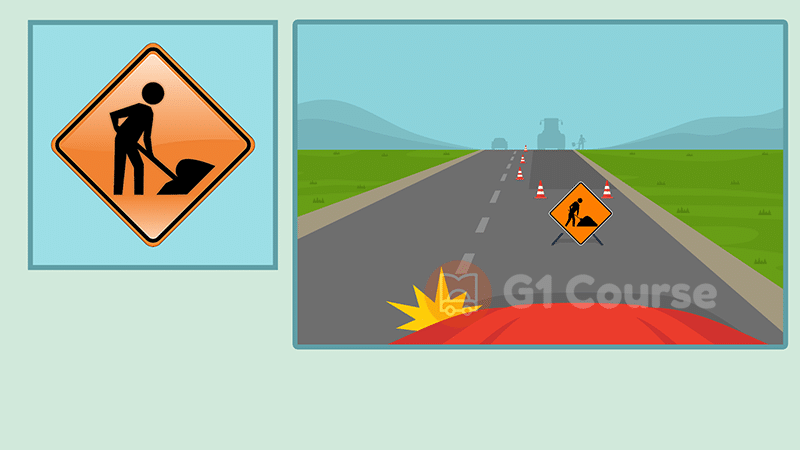
Road work ahead
School area ahead
Flagman on duty ahead
Pedestrian control sign
Correct!
Wrong!
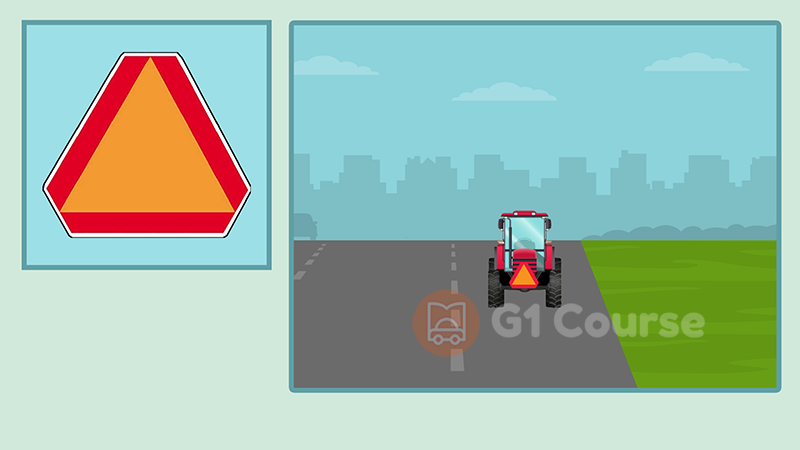
The vehicle ahead will be travelling at 40 km/h or less
Stop sign ahead
Dead-end street ahead
Yield right-of-way to vehicle ahead
Correct!
Wrong!
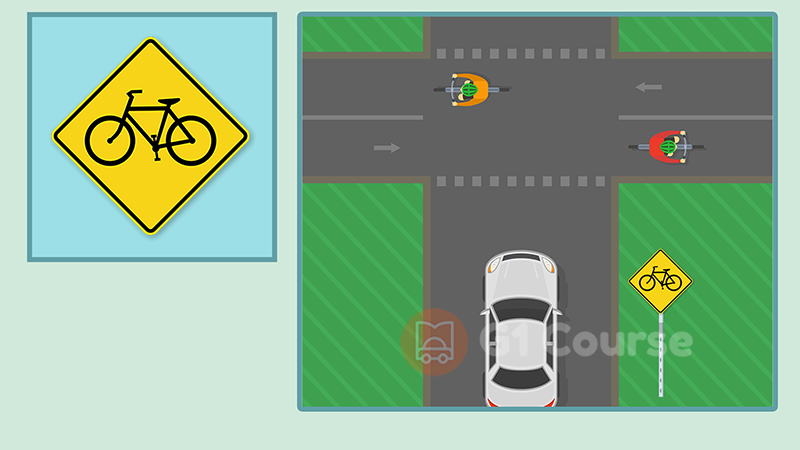
Bicycle crossing ahead
Bicycles not permitted
Bicycle parking permitted
Motorcycle crossing ahead
Correct!
Wrong!
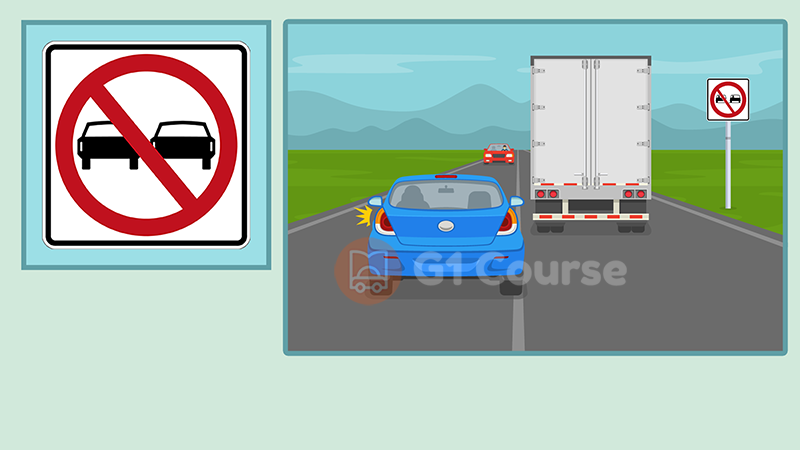
Do not pass on this road
Passing is allowed
HOV lanes
Cars not allowed
Correct!
Wrong!
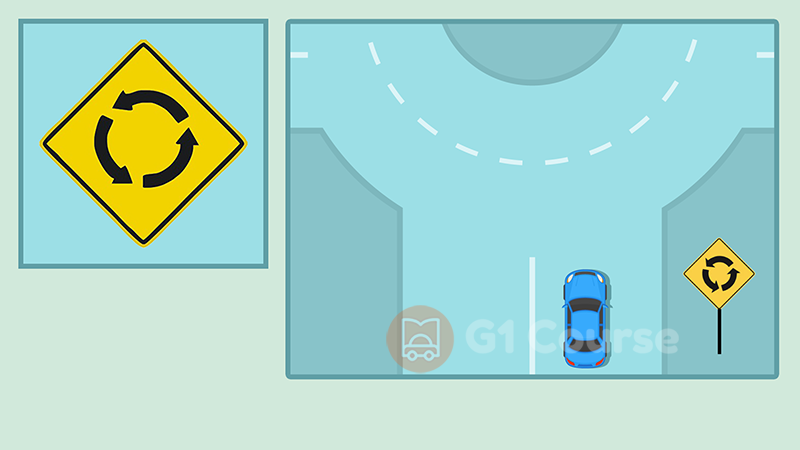
Roundabout Ahead
Permissive sign
Do not stop
Do not stop
Correct!
Wrong!
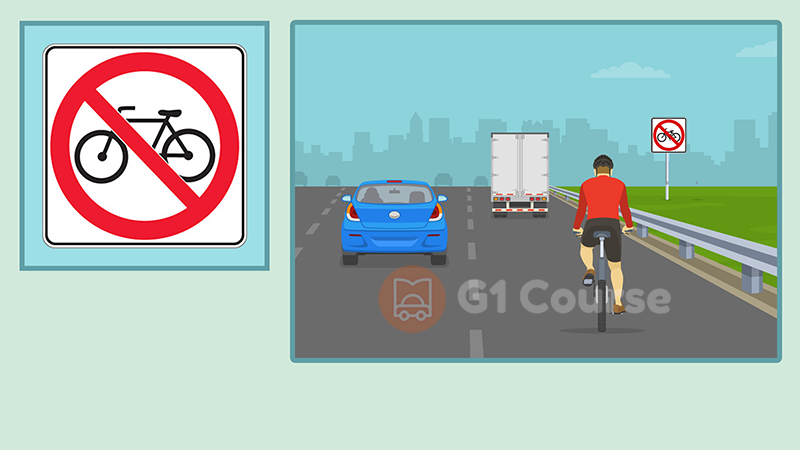
No bicycles allowed on this road
Bicycle parking
Bicycle allowed
Do not overtake bicycles
Correct!
Wrong!
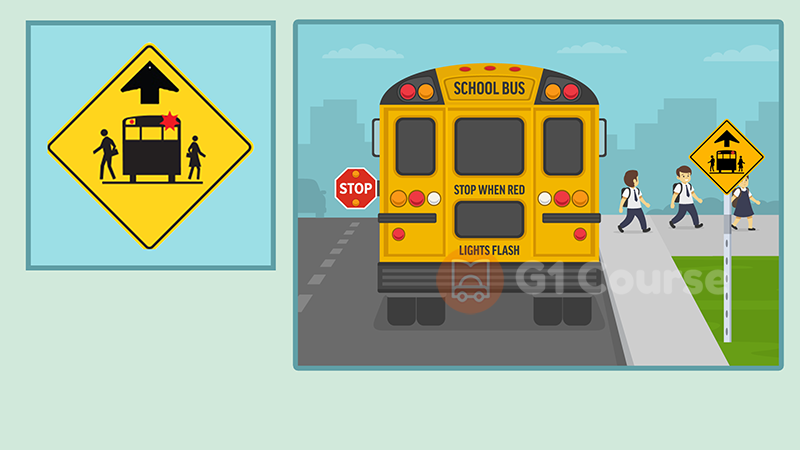
This sign warns you that you are coming to a hidden school bus stop
School ahead
Stop sign ahead
Play area
Correct!
Wrong!
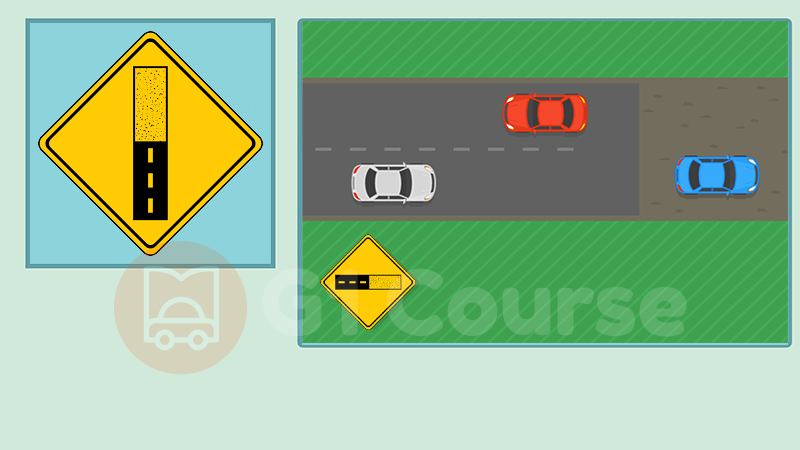
Paved surface ends ahead
Winding road ahead
Wet road ahead
Bridge ahead
Correct!
Wrong!
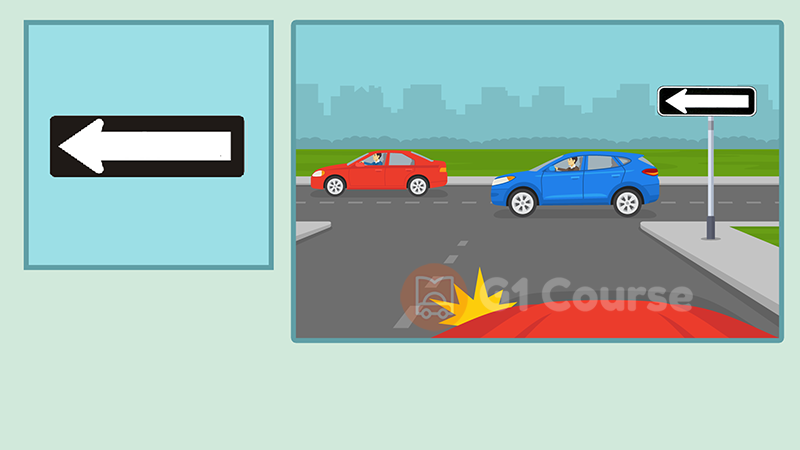
Traffic may travel in one direction only
One-way traffic ends
Do not turn right
Two-way traffic ahead
Correct!
Wrong!
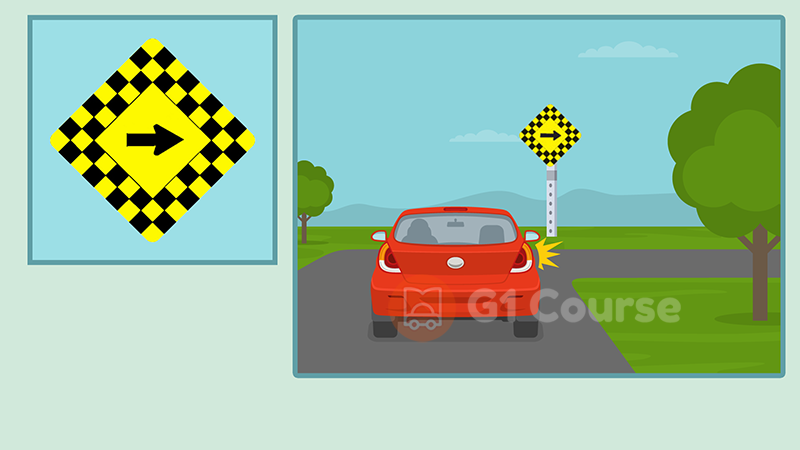
Sharp turn or bend in the road in the direction of the arrow.
No parking from arrows to corner
Winding road ahead
Road under construction
Correct!
Wrong!
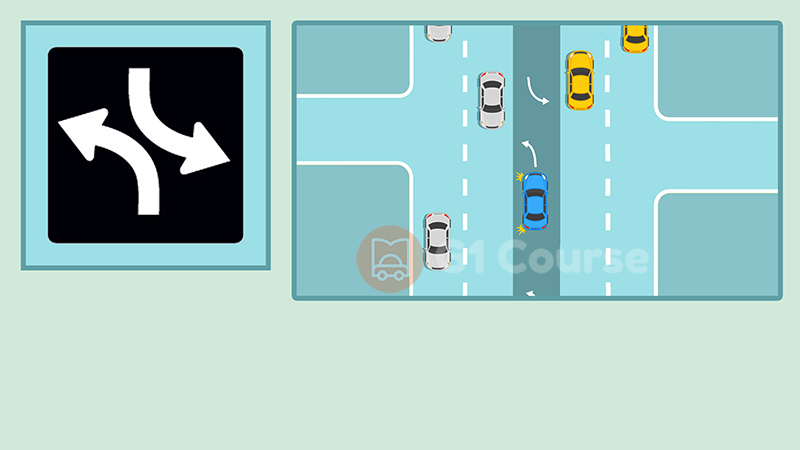
This sign, above the road or on the ground, means the lane is only for two-way left turns
Yield the lane to oncoming traffic
The lane is only for right turns
Two-way traffic ahead
Correct!
Wrong!
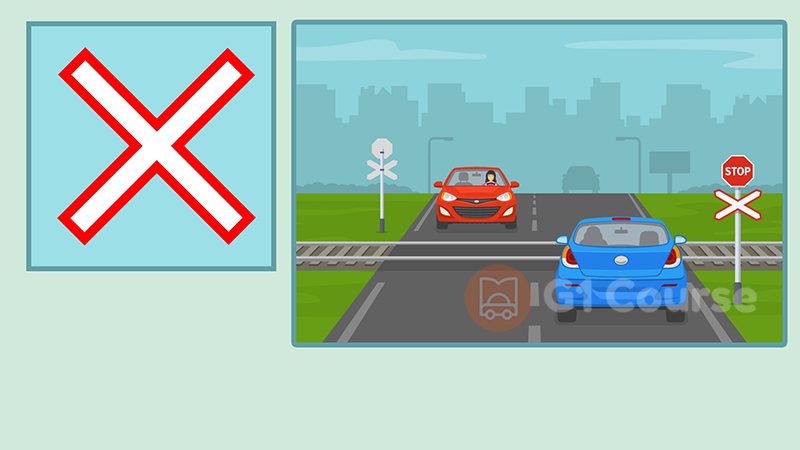
It warns that railway tracks cross the road
Do not enter
Roundabout Ahead
Local traffic only
Correct!
Wrong!
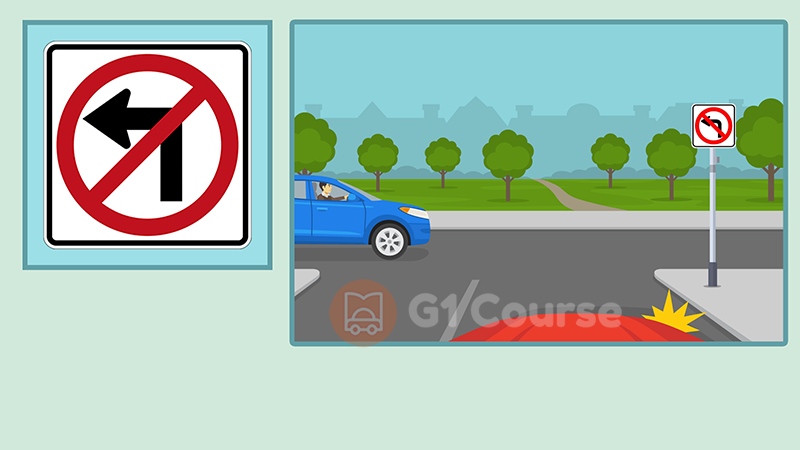
Do not turn left at the intersection
No parking on left
Hidden intersection ahead
Right turn only at the intersection
Correct!
Wrong!
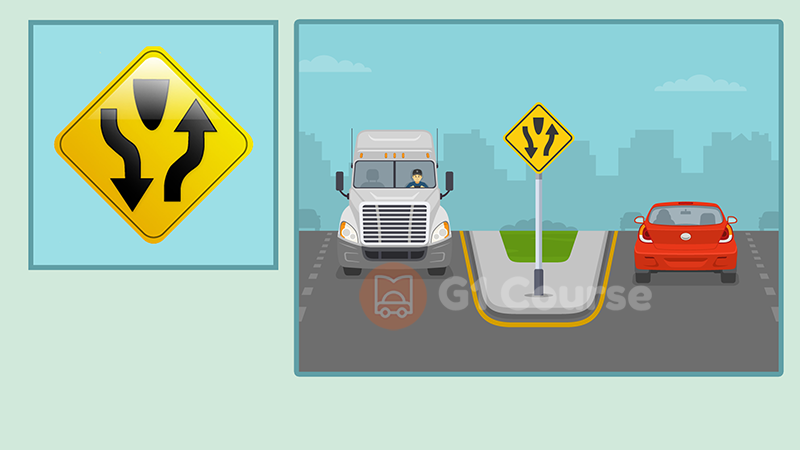
Divided highway begins
Do not stop
Narrow bridge ahead
Divided highway ends
Correct!
Wrong!
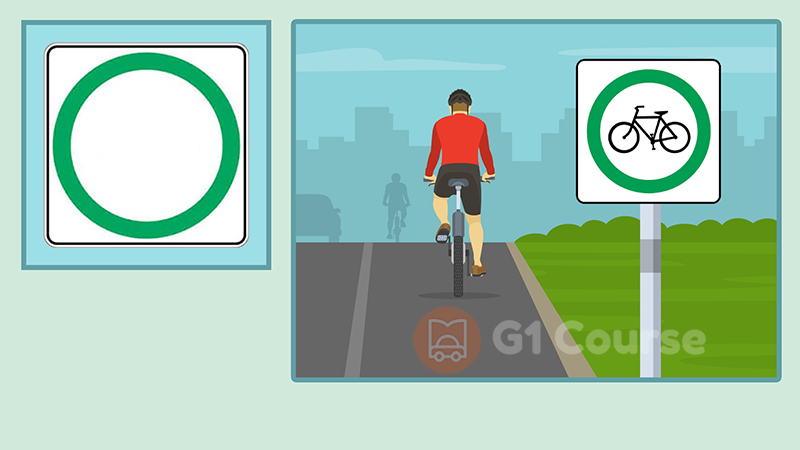
Permissive sign
Roundabout Ahead
Do not stop
Do not enter
Correct!
Wrong!
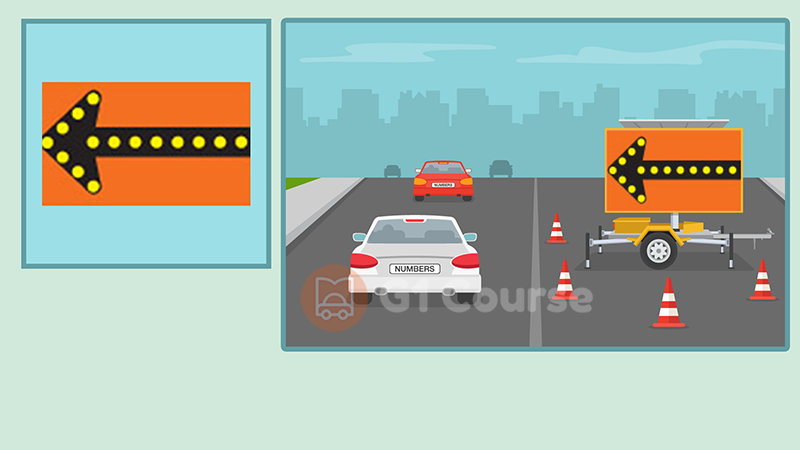
Flashing lights on the arrows show the direction to follow
Do not enter
Yield the lane to oncoming traffic
Stop sign ahead
Correct!
Wrong!
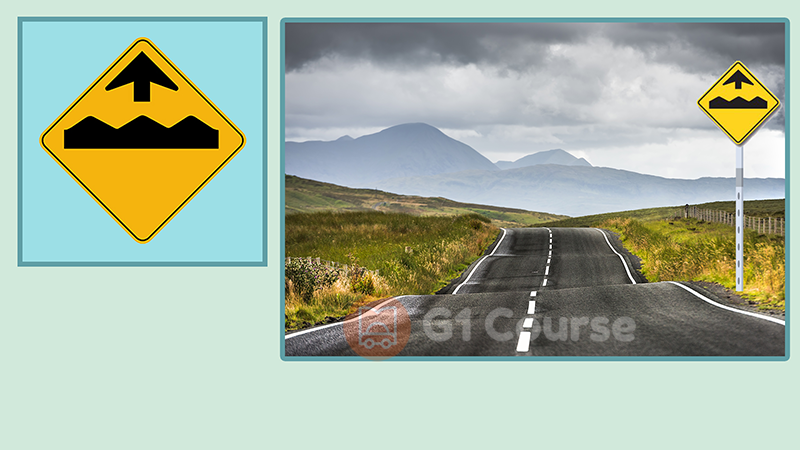
Bump or uneven pavement on the road ahead
Play area ahead
Winding road ahead
Crosswalk sign
Correct!
Wrong!
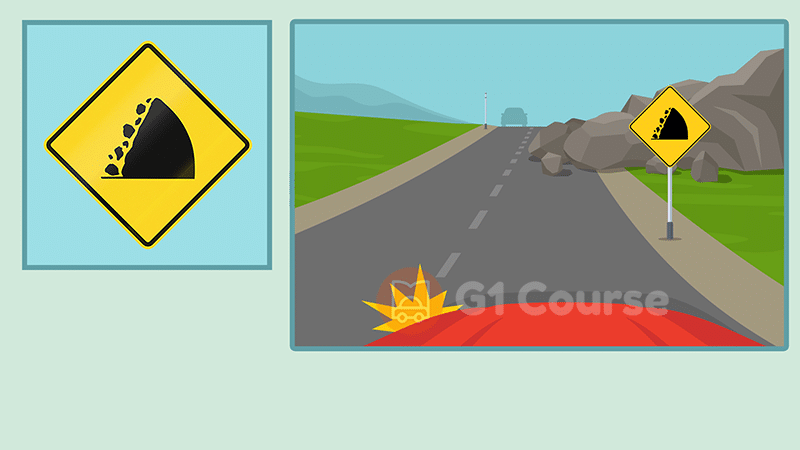
Watch for fallen rock and be prepared to avoid a collision
Slow vehicles should pull off
Divider ahead
You must drive only in this lane
Correct!
Wrong!
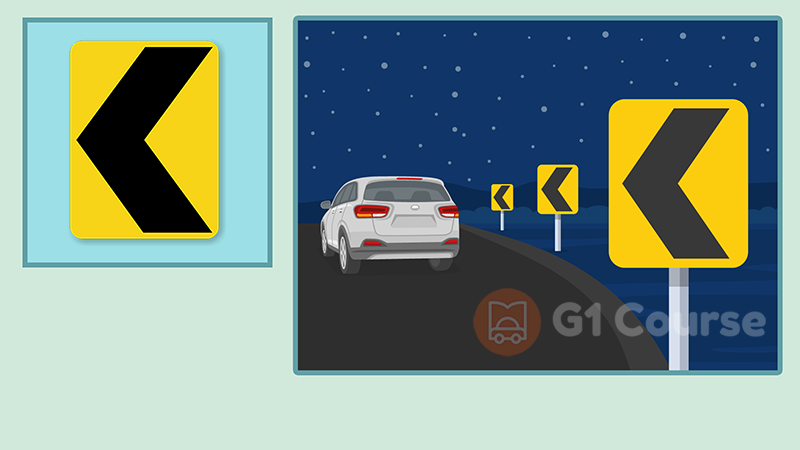
Chevron (arrowhead) signs are posted in groups to guide drivers around sharp curves in the road
Winding road ahead
No parking from arrows to corner
Narrow passage
Correct!
Wrong!
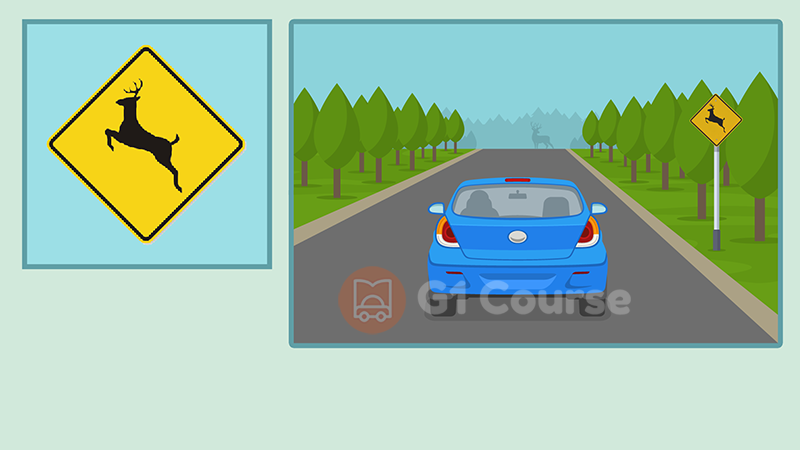
Deer regularly cross this road; be alert for animals
Scenic view ahead
Wildlife preservation center ahead
Zoo ahead
Correct!
Wrong!
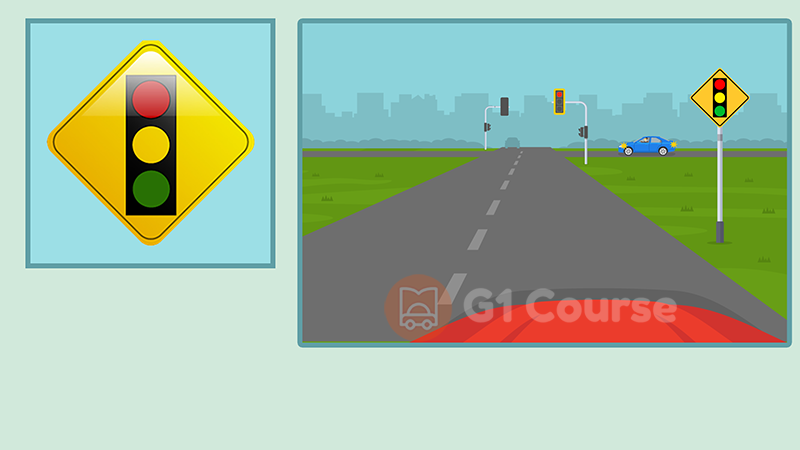
Traffic lights ahead. Slow down
Railway crossing ahead
Stop 150 feet ahead
School bus stop ahead
Correct!
Wrong!
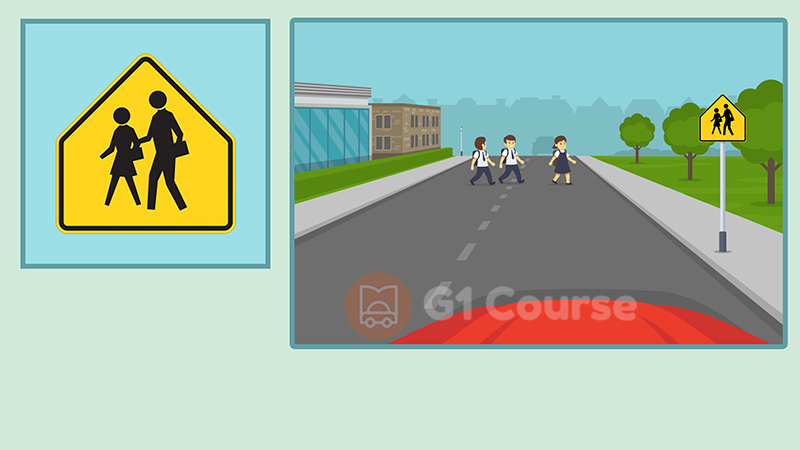
You are coming to a school zone
Playground area sign
Direction sign for children
Children playing in residential area
Correct!
Wrong!
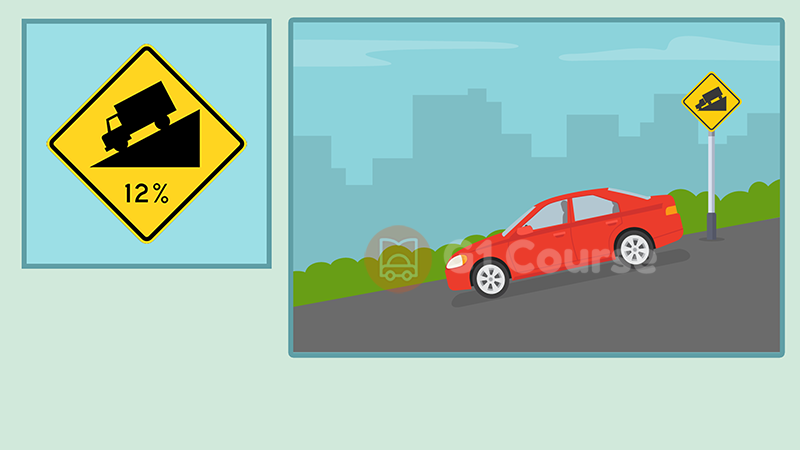
Steep hill ahead. You may need to use a lower gear.
Pavement ends 12 feet ahead
Bumpy road ahead
Safety check ahead
Correct!
Wrong!
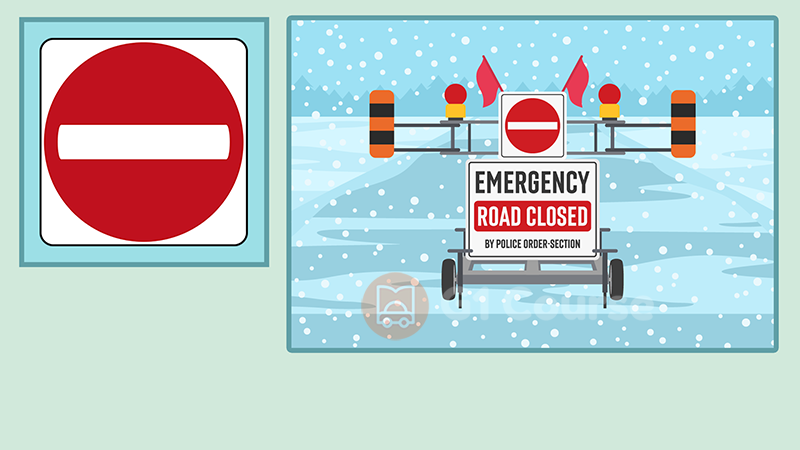
Do not enter this road
Dead end
Do not stop
Parking is not permitted
Correct!
Wrong!
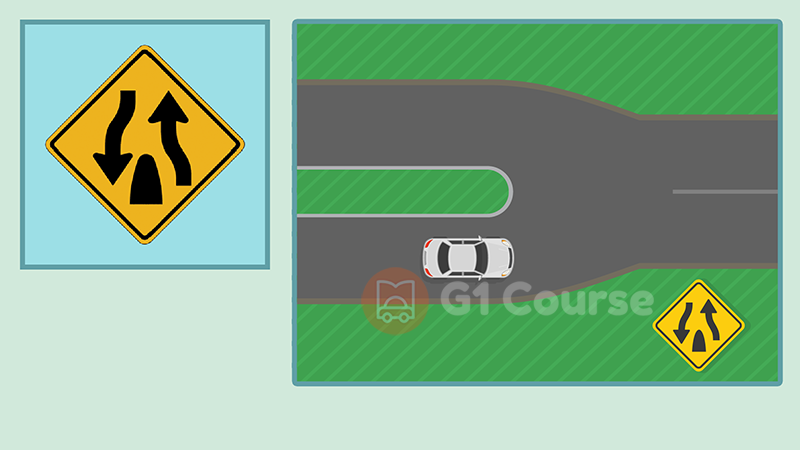
Divided highway ends
Divided highway ahead
Road under construction
Narrow bridge ahead
Correct!
Wrong!
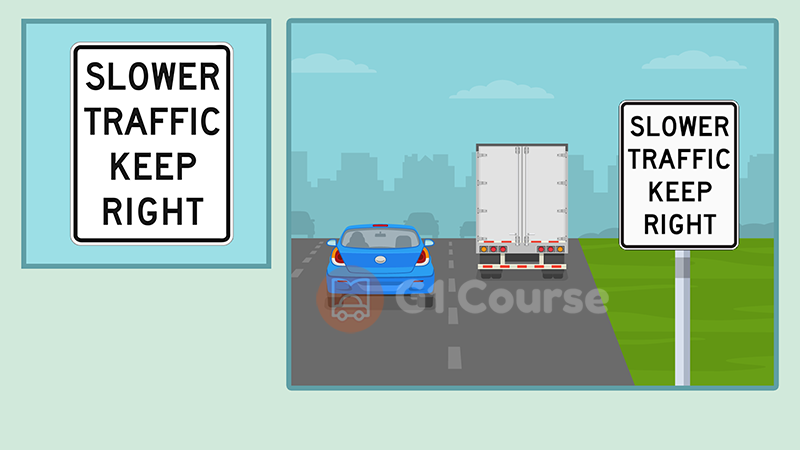
Slow traffic on multi-lane roads must keep right
Caution school bus crossing
School crosswalk sign
X intersection for school vehicles
Correct!
Wrong!
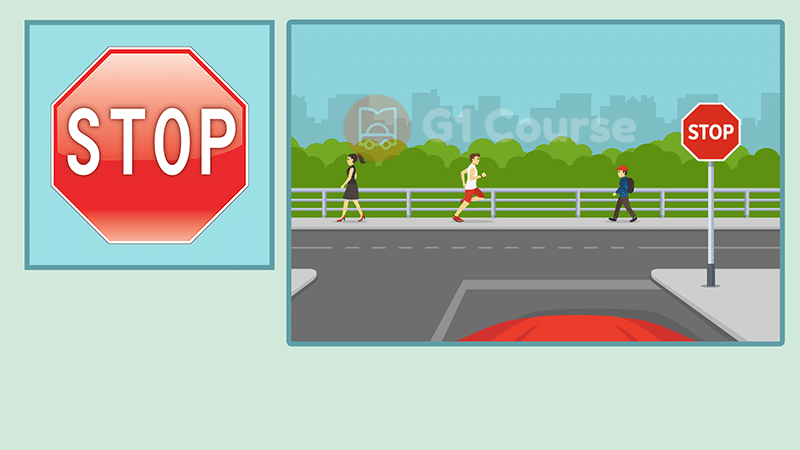
You must come to a complete stop
Stop only if other vehicles are approaching
Stop 150 feet ahead
Bump 150 feet ahead
Correct!
Wrong!
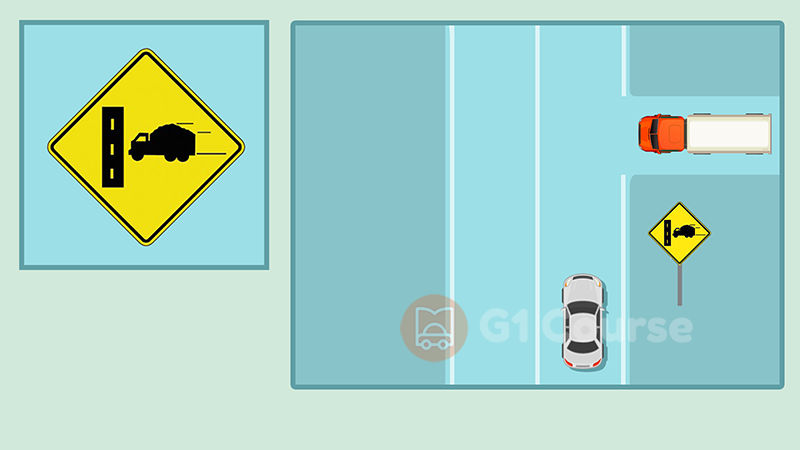
Truck entrance on the right side of the road ahead
Truck not permitted
Truck stop
Truck entrance on the left side of the road ahead
Correct!
Wrong!
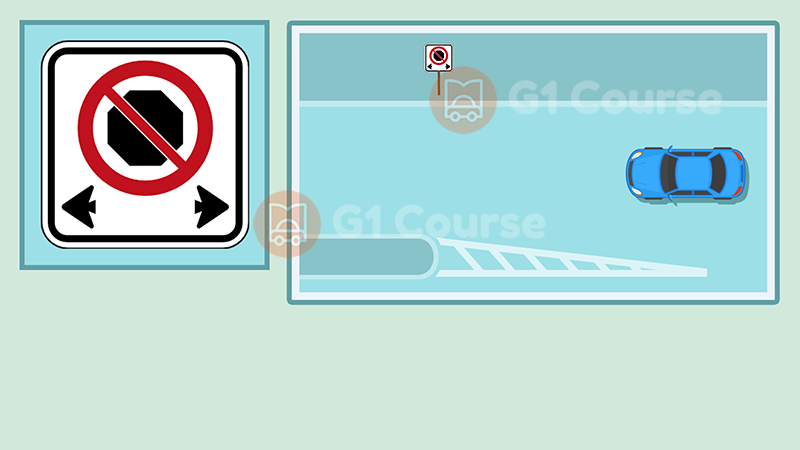
Do not stop in the area between the signs
No entry into intersection
Do not park in the area between the signs
Dead end
Correct!
Wrong!
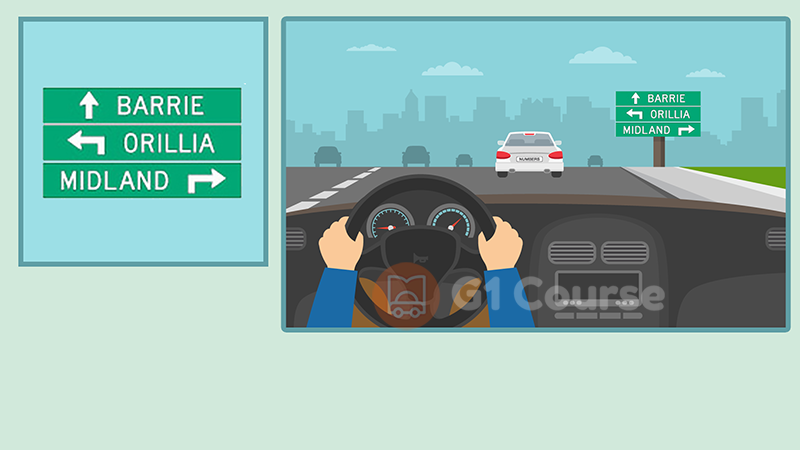
Shows directions to nearby towns and cities
You must exit
Dead end
Do not enter
Correct!
Wrong!
Share the quiz to show your results !
Subscribe to see your results
Signs 1
I got %%score%% of %%total%% right
%%description%%
%%description%%
More Learning Options:
Loading…
ADVERTISEMENT
Alongside the questions regarding traffic signs, we highly recommend utilizing our complimentary G1 practice test. This practice test is designed to closely replicate both the format and the content of the actual G1 examination, providing you with an excellent opportunity to familiarize yourself with the types of questions you will encounter. By taking this practice test, you will not only enhance your understanding of the rules of the road but also improve your confidence in tackling the G1 exam successfully. This resource is an invaluable tool in your preparation journey, ensuring you’re well-equipped for the real test.
